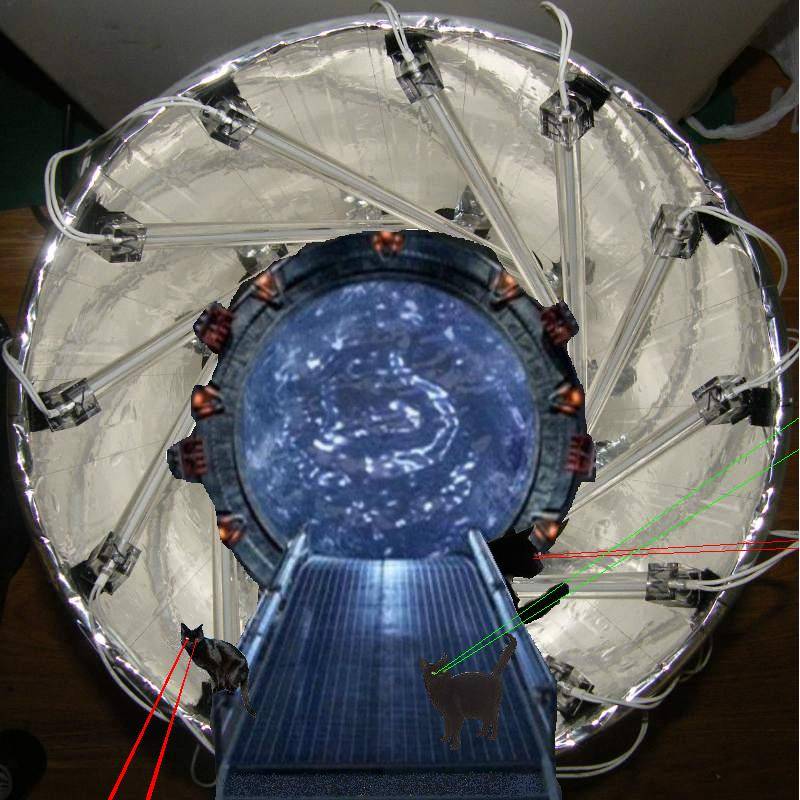Mr.Jones
Active member
This is what I do when I'm bored.....
Scrubgate SG-1

lol lookin great man.
This is what I do when I'm bored.....
Scrubgate SG-1

lol lookin great man.
 I think this may just work! The intake foam is more restrictive (and better blocking light) than aquarium foam, but I went overboard on intake holes. Exhaust size of that fan is 37.5 sq cm. My intakes equal approx 115 sq cm. That's 3x. I should have it all sealed up tomorrow and can judge if it'll work.
I think this may just work! The intake foam is more restrictive (and better blocking light) than aquarium foam, but I went overboard on intake holes. Exhaust size of that fan is 37.5 sq cm. My intakes equal approx 115 sq cm. That's 3x. I should have it all sealed up tomorrow and can judge if it'll work. 
I know there's some trick you do with running a powersupply without a mobo...You have to jumper some wires in one of the plugs to get it to kick on. ah ha! here is it --> linkThe PC power supply will work without a power button?
A computer power supply converts AC power from the wall, to DC power for the computer components. In that conversion process, a certain amount of energy is lost, as heat. (That's why power supplies have heatsinks, and cooling fans.)
So, for example, if you have a set of computer components that draw 220 watts under 100% load, a power supply that is 70% efficient, will be drawing 314 watts from the wall, in order to produce 220 watts for the computer. By comparison, a power supply that is 85% efficient, will only need to draw 259 watts from the wall (55 less), in order to produce the same 220 watts for the computer.
Also, because the more efficient power supply wastes less energy in heat, they can be quieter --they can use fans spinning at lower rpms.
The "extreme.outervision.com" power supply calculator shows a percentage selection for "system load," but that's not related to efficiency. It's more about including a certain amount of extra capacity in the wattage estimate.
For cheap power supplies, if you use them near 100% of their rated capacity, you risk burning them out. (Even though a reputable power supply should be able to run reliably at 100% of it's rated capacity.) Also, a power supply's ability to regulate voltage also tends to get worse as it approaches 100% of it's rated output (voltages sag). Also, power supply components age, effectively losing capacity. Thus, buying a power supply somewhat larger than you need gives you additional safety margin.
 scrub totally inspired that idea btw.
scrub totally inspired that idea btw.